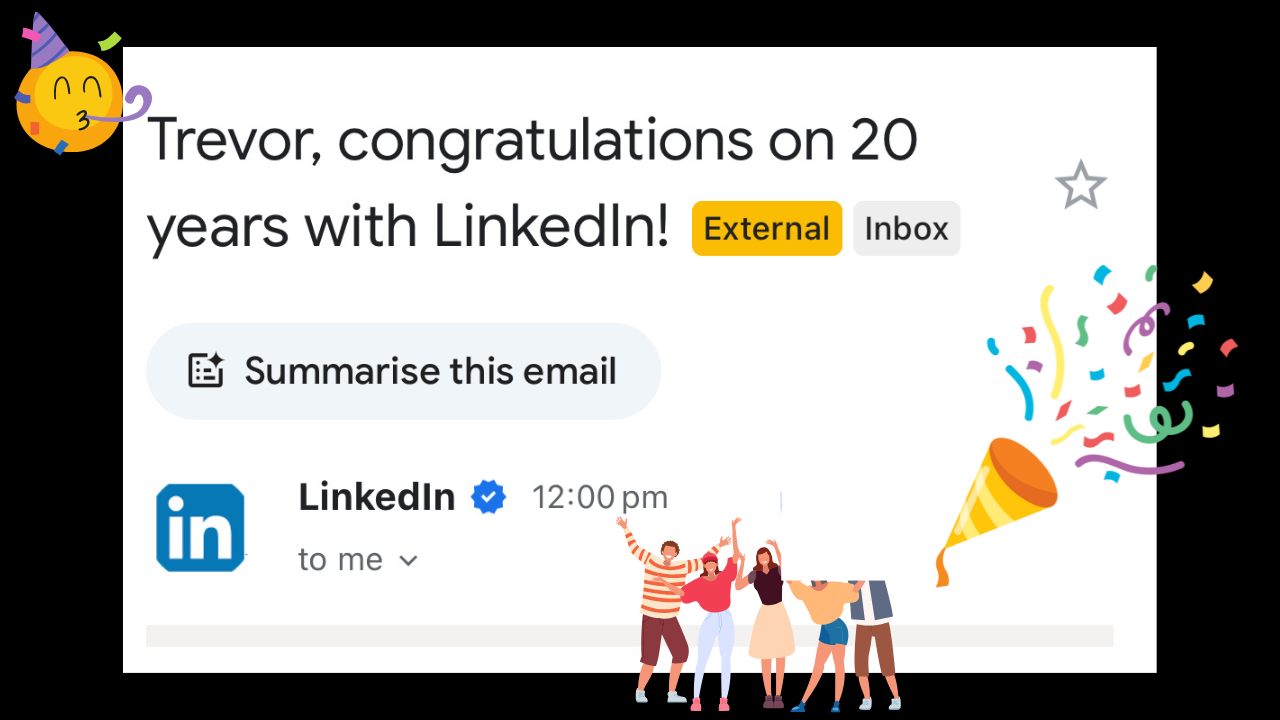
LinkedIn has just alerted me to the fact I’ve been a member of the platform for 20 years – wow!
You’d have to say a bit’s changed. With that in mind, here are some observations, with a bit of spice 🌶️ thrown in for good measure!
In the early years, if you invited someone to connect, you were definitely seen as a stalker! Today, not so much 🙂
*** Following are some key shifts I’ve experienced on the platform after being on it for two decades:
Loosened up …
It took a while, but LinkedIn finally went from being a stodgy ‘buttoned-up suit’ to ditching the jacket and tie; people loosened up on the platform, not just in the comments, but also with the content they produced. Covid, of course, changed everything – that’s when LinkedIn, for better or worse, became more social and Facebook-like.
Slow evolution
LinkedIn has evolved more slowly than the other social platforms; it took forever to get video and other things like live-streaming & audio events. Heck, a short-form vertical video feed has only just been introduced recently. LinkedIn will probably say this slow-to-evolve philosophy is because its audience is older and more conservative than other networks. Maybe, or is it because the company itself isn’t forward-thinking enough?
Increased competition for attention
In the early days, there wasn’t the competition for attention there is now. While much of the content was pretty boring and polished, it was at least reasonably authentic. People weren’t trying to game the system because frankly, there was no need to. Just being active on the platform was enough to get you noticed, and start conversations and relationships accordingly.
The rise of ‘Influencers’ and ‘Creators’
We’ve seen in recent years the rise of LinkedIn ‘Influencers’ and ‘Creators’. As an aside, can we stop calling these individuals by such lofty titles? Anyone who produces content on LinkedIn is a creator. A lot of people are publishing posts that are way better than the sop put out by ‘Creators’, many of whom are trying to game the system, producing content that is derivative, repetitive, and manipulative, as well as engaging in frowned-upon behaviour (engagement pods anyone?). Can we stop lionising these people – they’re (mostly) nothing special.
‘Trauma dumpers’
‘Trauma dumpers’ largely came and went. These were people who dumped their personal problems into the feed; they got engagement early, and many of these types of posts went viral. So, of course, the look-at-me crowd jumped on the bandwagon. Whether their ‘dumping’ was legit (maybe a call to help?), or simply produced for comments and likes (and reach), who knows. I’m tipping more of the latter 🙂 That’s why LinkedIn cracked down on them. The occasional trauma dumper still sneaks through, but I feel the feed is pretty free of these types of posts today.
Will substance win out?
For all the negatives, I still like LinkedIn and I’m here daily. The algorithm is a bit 💩 and continues to adversely affect people’s reach, and their content feeds. Hopefully LinkedIn will swing back to the ‘real’ creators, people of substance with something to say, whose perspectives we need to hear!
Here’s to the next 20 years!



Leave a Reply